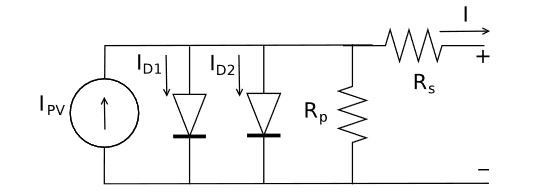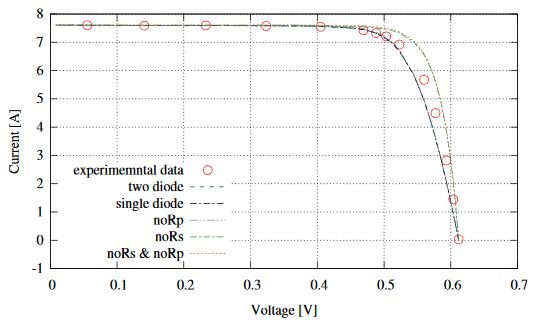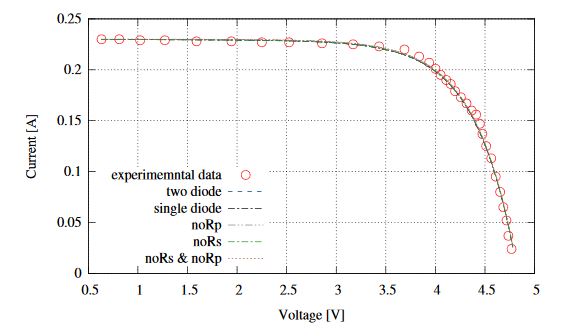ABSTRACT
Reproducibility of experimental conditions is a fundamental requirement for designing energy efficient, self-sustainable wireless sensor networks (WSNs). At the same time, it represents a significant challenge because of the variability and the unpredictability of many energy harvesting sources, and because of the dynamic operating conditions of the devices to which energy is supplied.
Energy source emulation is considered a suitable solution to enable the exploration of the design space of networked embedded systems. However, in order to guarantee the compatibility with real-time performance of resource-constrained embedded platforms, particular attention has to be paid to the complexity of the models.
In this paper, we propose an approach aimed at tuning the complexity of models of photovoltaic (PV) arrays implemented on a target embedded emulator, featuring low cost and small form factor. Experimental results performed on different models of PV array, show that the proposed solution is flexible and accurate enough to meet the real-time constraints of typical sensor networks applications without impairing the precision in the emulation of the energy sources.
MODELING A PHOTOVOLTAIC ARRAY

Figure 1. The two diodes equivalent circuit of a photovoltaic (PV) array
Figure 1 exemplifies a two diodes model with parallel and series resistance. It is currently considered, in literature, a model capable of accurately reproducing a broad spectrum of operating conditions. It takes into consideration a series of aspects and features related to the production of energy from solar radiation, namely the following:
(1) the classic PV effect, by means of current generator IPV and diode D1;
(2) the effect of the recombination current in the depletion region, which particularly affects accuracy in the low-voltage region, by means of diode D 2;
TUNING MODELS COMPLEXITY
To adequately tune the run-time complexity of the PV model (i.e., the resolution of the Several I–V curve) we propose a methodology which can be summarized as follows:
• For each model to be analyzed:
–the error achieved to reconstruct the Several I–V curve of a particular PV device by means of the model is measured;
–the time required at run-time to resolve the model (i.e., to derive the voltage values to be applied by the emulation board from current values) is measured.
RESULTS AND DISCUSSION

Figure 4. Results of model tuning for Q.CELLS Q6ML-1600 PV module

Figure 5. Results of model tuning for Multicomp MC-SP-0.8 PV module
Similar considerations can be made for the Q.CELLS Q6ML-1600 and for the Kyocera KD135SX PV modules (Figures 4 and 6) while particular attention must be given to the results obtained while modeling the Multicomp MC-SP-0.8 PV module (Figure 5). In fact, in this case, no appreciable mismatches can be highlighted between the models and the experimental data while reducing the model complexity. The limited current and voltage produced by the MC-SP-0.8 PV module lead to a very low impact on the resulting accuracy of the more complicated modeling strategies currently adopted in literature.
CONCLUSIONS
The design of energy efficient networked embedded systems is severely hampered by the lack of flexible frameworks for experimentally testing new solutions. This task is usually achieved either by simulation or by direct implementation on testbeds. While simulation provides the opportunity to explore in a reproducible fashion large portions of the design space, it inherently approximates many aspects of real-world operating conditions.
Conversely, testbeds represent a convenient alternative to carry out realistic experiments, at the price of high costs and reduced flexibility and reproducibility. This scenario is further complicated if energy harvesting and workload variability are taken into consideration. Indeed, the dynamics of energy harvesting sources are particularly difficult to predict and, at the same time, load impedances could frequently change, for instance according to different dynamic power management states applied to the devices.
Emulation is considered a valuable option which enables reliable reproduction of many different energy sources (e.g., harvesting devices) within a repeatable and controlled set up. However, in order to cope with real-time requirements when dealing with resource-constrained embedded devices, the complexity of the models implemented on the emulation board should be carefully evaluated. In this paper, we presented a novel methodology aimed at tuning the complexity of PV array models executed by embedded emulators.
The proposed approach allows one to explore the trade off between the accuracy and latency of the emulation process, thus providing a flexible resource for system design of real-time compatible, low-cost embedded emulation boards. Experimental results on a representative set of commercially available PV arrays demonstrate the effectiveness of the introduced technique. A remarkable conclusion obtained is that low-power PV arrays with small form factor and low voltage–current levels can be emulated on embedded platforms to meet real-time constraints without introducing significant errors.
Source: University of Urbino
Authors: Emanuele Lattanz | Matteo Dromedari | Valerio Freschi | Alessandro Bogliolo
>> More Wireless Sensor Networks Projects Abstract for Final Year Students
>> More Wireless Embedded Projects for Final Year Students
>> More Wireless Energy Projects for Final Year Students